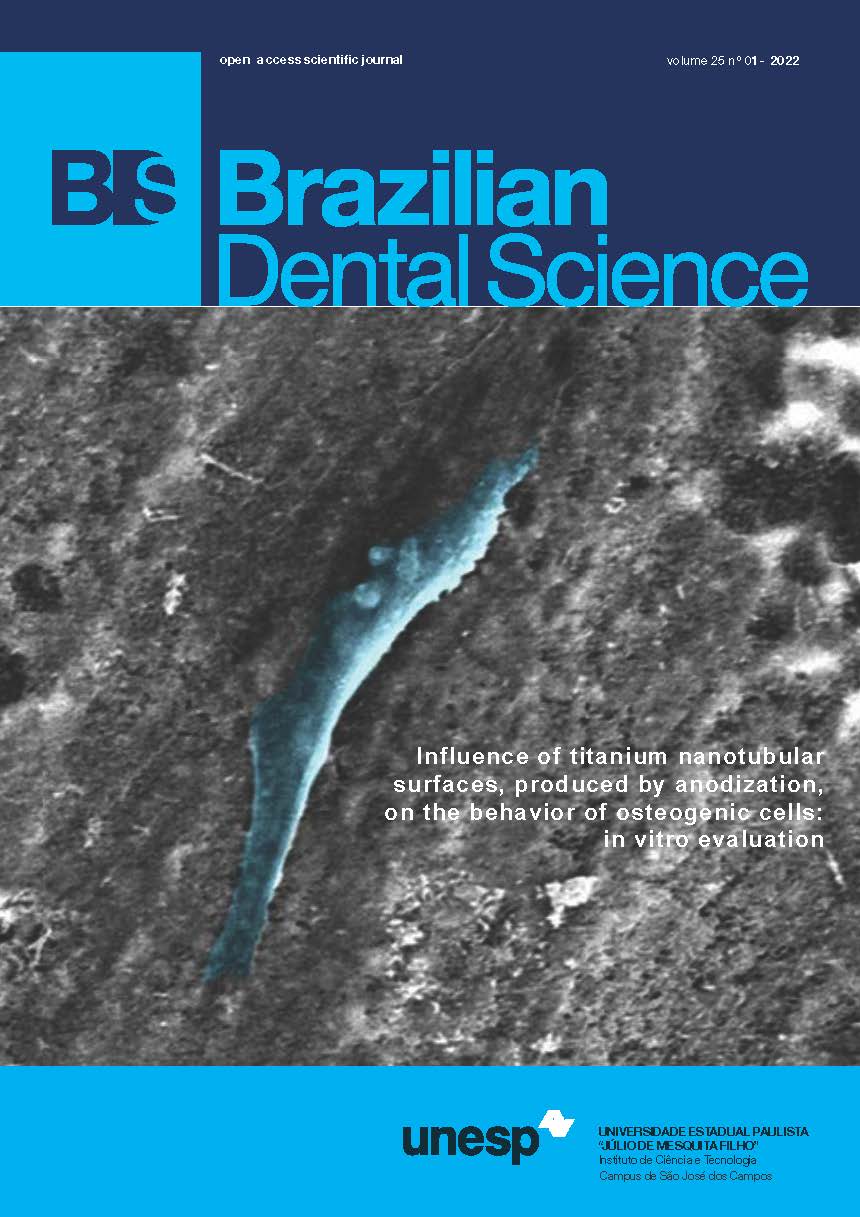A study comparing patient satisfaction and retention of CAD/CAM milled complete dentures and 3D printed CAD/CAM complete dentures versus conventional complete dentures: a randomized clinical trial
DOI:
https://doi.org/10.4322/bds.2022.e2785Resumo
Objective: To compare the three different methods of complete denture fabrication assessing patient satisfaction
and retention after insertion for six months’ follow-up period. Material and Methods: The study was conducted
in the Prosthodontic Department where a total of forty-eight patients were recruited from the outpatient clinics
fulfilling the inclusion criteria. This study was designed as a randomized controlled clinical trial. All patients
followed the steps of complete denture construction till jaw relation record. Then, all eligible patients were
randomized to intervention and control groups. For intervention groups digital scanning, designing, manufacturing
of complete dentures was done; 3D printing for first and milling for second intervention. For the comparator
group, complete dentures were manufactured the conventional way. After 2 weeks of delivery of the dentures,
patients received a patient satisfaction questionnaire, retention was measured by retention force gauge. Both
readings were also recorded after 3 months and at 6 months. The mean and standard deviation values were
calculated for each group in each test. The significance level was set at P < 0.05. Results: No statistical difference
was found in terms of patient satisfaction and retention between the three groups at different time intervals.
Conclusion: The manufacturing technique seemed to have no influence on patient satisfaction and retention
with milled showing the least results.
KEYWORDS
Computer-aided design; Denture, Complete; Denture retention; Patient satisfaction; Printing, Three-dimensional
Downloads
Downloads
Publicado
Versões
- 2022-03-29 (2)
- 2022-02-03 (1)
Como Citar
Edição
Seção
Licença
TRANSFERÊNCIA DE DIREITOS AUTORAIS E DECLARAÇÃO DE RESPONSABILIDADE
Toda a propriedade de direitos autorais do artigo "____________________________________________________________________" é transferido do autor(es) para a CIÊNCIA ODONTOLÓGICA BRASILEIRA, no caso do trabalho ser publicado. O artigo não foi publicado em outro lugar e não foi submetido simultaneamente para publicação em outra revista.
Vimos por meio deste, atestar que trabalho é original e não apresenta dados manipulados, fraude ou plágio. Fizemos contribuição científica significativa para o estudo e estamos cientes dos dados apresentados e de acordo com a versão final do artigo. Assumimos total responsabilidade pelos aspectos éticos do estudo.
Este texto deve ser impresso e assinado por todos os autores. A versão digitalizada deverá ser apresentada como arquivo suplementar durante o processo de submissão.




























